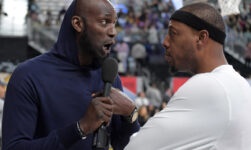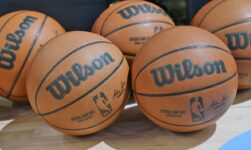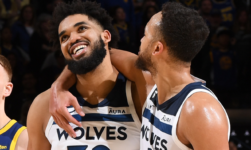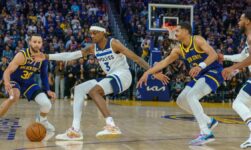Dwyane Wade admitted he was nervous and scared headed into post-NBA life.
“I mastered basketball. I’m great at this. This is what I know. This is what I’ve been doing since I was 5 years old and now I’ve got to do something different,” Wade told USA TODAY Sports. “After feeling sorry for myself for six months, I got on the phone with my team and said, ‘I’m willing to work. I’m willing to learn.’ ”
Wade, a 13-time All-Star and eight-time All-NBA selection and 2006 Finals MVP, is a torrent of energy and activity in his post-career job(s), melding his love of sports, fashion, entertainment, food and wine and business. He started his own production company, 59th and Prairie Entertainment, has a line of wines, purchased a share of the Utah Jazz, hosted a TV game show and continued his work with designer sock company Stance and shoe and apparel company Li Ning.
And he authored a photographic memoir, a coffee table-style book featuring more than 200 photos and the story behind those photos. The book titled ‘Dwyane’ and published by William Morrow is out Tuesday, and many of the photos were selected from the collection of Wade’s longtime friend and photographer Bob Metelus, who had nearly two million photos from which to choose. Wade told the stories.
“What I was really trying to do, I was trying to wrap up this career,” Wade said. “If you see the title of the book, it’s named ‘Dwyane.’ As I move into this next phase, as I move into 40 years old, I’m not D-Wade or Flash anymore. I’m in this next phase and that phase is Dwyane.
Dwyane Wade won three titles and was a 13-time All-Star with the Miami Heat. The franchise retired his jersey in February 2020.
“What I tried to do is wrap up that 16-year career in these photos and tell those stories from my career.”
Wade talked to USA TODAY Sports about the book, his post-basketball life and being named one of the NBA’s 75 greatest players last month.
This Q&A was edited for clarity and length.
Story continues
Q: What was it like seeing the book and flipping through and feeling you had seeing your life presented that way?
A: It was a good moment for me because first of all when you go through the process of writing a book, it’s a long tedious, grueling process. I’ve been going through this for the last three years trying to put this together. To finally have it in hand and to see your vision come to light was a dope moment.
It gives you a chance to look back, and that’s something we don’t do a lot especially as athletes – you have to stay in the moment, you have to move forward to the next day, the next game, the next shot. This is a moment where you can reflect. The reflection moment for me was so dope.
Q: Why did you want to do a photographic memoir?
A: I’m visual. How I learn, how I like to imagine stories, I always tell people, ‘Give me a visual of something.’ That’s what I wanted to do. I could’ve easily put words on a piece of paper, which I’ve done before. But I wanted to use photos because I feel like photos not only gives more context to the text but it goes deeper when you see the photos. I wanted to give my supporters and my fans and family a visual way to think about my career or think about these moments and think about this story.
Q: What was the process of putting together this book like?
A: There’s so many photos and to go through all these photos and find what story from this photo are people really going to want to hear and want to know.
I started over. I started the book and started over and that was a whole ‘nother thing taking out photos and bringing in other photos. Like I said, a very long process. When I grabbed that book, I did a sigh of relief that we finally got to this point.
Ultimately, this may be a book that collects a lot of dust on a lot of coffee tables and I’m OK with that. But I hope someone opens this book and sees one story or one photo that uplifts, that inspires them and their families.
Q: What was the message you wanted to present in this book?
A: What I was trying to accomplish without really knowing was just showing a human side. When you’re an athlete, especially when you’re great at it, you’re perceived as being Ironman and you’re supposed to be a superhero. Hopefully throughout this, you see moments of me on my couch at home with the toe-spreaders in between my toes. I tried to show moments with my hair nappy. Whatever. I just tried to show human moments and to give people who have followed me but haven’t had a chance to see some intimate moments. I wanted to give context to those moments. It was cool. ‘Hey guys, I’m human,’ and these are my insecurities in this moment and this is what I was thinking in this moment and this is where my heart was beating fast in this moment.
Q: At the end of your playing days, you told me you weren’t sure what post-basketball life had in store. You have filled it with projects and business. How did you map out your post-basketball career?
A: A long process, I guess, right? When we retire as athletes at whatever age, let’s say you played a long career like me and you’re 37 years old, you’re a young man. One of the blessings I have when I retired, they opened the door for me to walk out when I was ready. But when the door shuts behind you, I was able to walk out with three championship rings. That represented winning, being a winner.
One of the lucky blessings I had is that people know I actually know how to work with a team and know how to win. Everybody doesn’t get to come out with something as simple as that. Even with that, for the first six months, I was nervous and scared about ‘What next?’ … I was willing to go back to my rookie year all over again. I’ve got that energy. I just got to work, and I got to work on the things I knew worked for me in sports. The one thing I always knew that worked was hard work, showing up early, leaving late, listening, listening, applying. I know all those things work. Let me try that in this world.
Q: You became a part-owner of the Utah Jazz in In April. What is your role?
A: My role is going to be forever evolving. When you think about a team, obviously Ryan Smith is the majority owner, so Ryan Smith makes the decisions. The rest of us are minority owners, so I think my role evolves in terms of how much I want to be involved, how much I want to know, how much I want to learn. If you know anything about me over the years, I’m a very curious person. I love to learn. Right now, I’m learning a side of the business that I didn’t know as a player, and I know the strengths that I bring. I know from a standpoint of winning, culture-building, sacrifice. It’s been great to be able to try and bridge this gap between ownership and players – the way we communicate. We talk about this partnership. You get in and see the hierarchy inside of sports and how do we break down the hierarchy barrier while still having – yes, people have to have roles – but how do we break it down to where there’s more partnership and unity inside the organization? It has really been great, not just from the basketball perspective, but from a business perspective. I’m learning a lot from business partners who want to see me grow. There’s so many parts to ownership, but what we all know is the Utah Jazz are an unbelievable platform for us to be able to do the things we’ve said we always wanted to do, and that’s community, building and having fun.
Q: What does it mean to you seeing your name on the NBA’s list of 75 greatest players?
A: It’s just one of those moment. You think when you come into the league, you think, ‘If I get drafted, if I make the team, if I make an All-Star team, if I win a championship, if I become a Hall of Famer, that’s huge.’ All those things. What you don’t think about is becoming one of the 75 greatest players ever to play basketball. It’s not really something I thought about. I thought about being one of the best at my position. But that’s it. To get that honor and to look at the other names and the room you are in. I grew up idolizing Michael and Kobe and Iverson, and I’m in the same room, wearing the same jacket. That means something. This is the biggest honor I could get, even bigger to me than the Hall of Fame because the number is so small. It’s so limited. I’m aware of how many people have picked up a basketball in the 75 years the NBA has been around. To call myself one of those best 75 to have ever picked up a basketball, that’s something I’m still trying to get used to.
This article originally appeared on USA TODAY: Dwyane Wade settling into post-NBA career, leaving D-Wade and Flash






